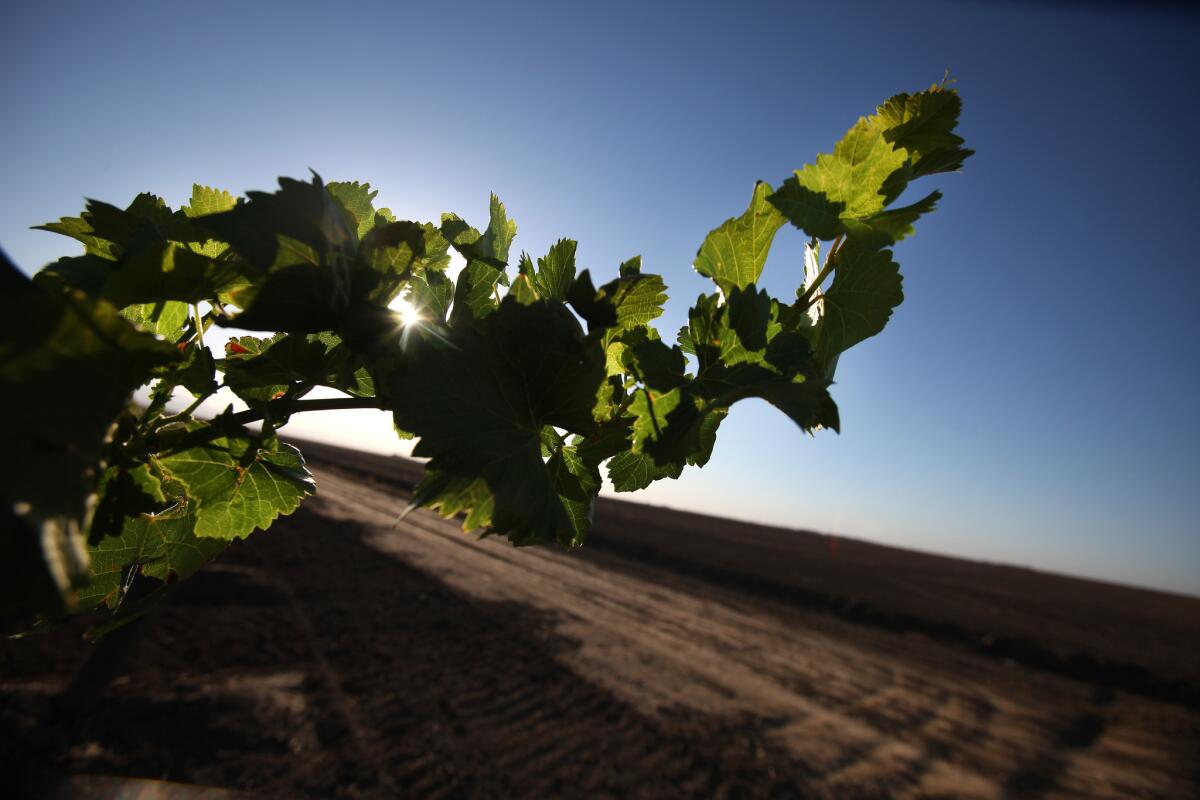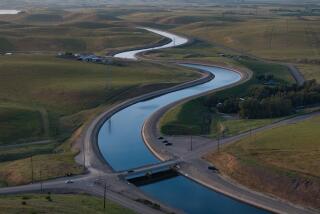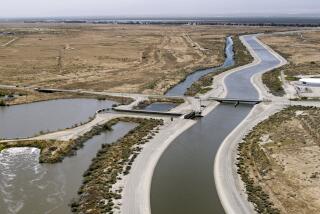Outlook improves for federal irrigation deliveries in much of the Central Valley

A grapevine is seen next to a sun-baked field in the western San Joaquin Valley.
Central Valley growers this year will see more federal water flowing to their fields than last, although deliveries to some parts of the state’s farm belt will remain scant.
Initial Central Valley Project allocations announced Friday were good news for Sacramento Valley farmers and cities, which will get 100% of their contract supply.
But the picture is less bright in the San Joaquin Valley. The valley’s west side, home to the sprawling Westlands Water District, will receive only 5% of contract amounts. That is an improvement over the past two years of zero deliveries, but it still will force growers to pump groundwater and buy water from other districts.
San Joaquin Valley irrigation districts with senior rights will get full deliveries, while growers on the east side will get about a third of their full supply.
The mix of allocations reflects the complicated rules for water deliveries, which depend not just on precipitation, but on reservoir storage, water rights and environmental protections.
West side water districts were quick to condemn their low allocation, blaming it on endangered species protections for imperiled native fish.
“We are furious with today’s allocation announcement,” Jason Peltier, executive director of the San Luis & Delta-Mendota Water Authority, said in a statement. “At a time when water supplies have returned to normal and the major reservoirs are in flood control operations, the federal fishery agencies continue to hoard water.”
The initial allocation is always conservative, and U.S. Bureau of Reclamation officials said it could increase in the next few months if conditions improve in the Sacramento-San Joaquin Delta, the source of west side supplies.
“While we are on track for near-average precipitation season this year, the ongoing and residual impacts of the multiyear drought continue,” said David Murillo, the regional director of the U.S. Bureau of Reclamation.
Levels at Lake Shasta, the flagship reservoir of the federal system, have climbed to above average for the date. But other reservoirs, including the one that supplies the west side, remain below normal.
Twitter: @boxall
More to Read
Start your day right
Sign up for Essential California for news, features and recommendations from the L.A. Times and beyond in your inbox six days a week.
You may occasionally receive promotional content from the Los Angeles Times.







